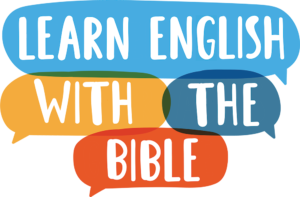Intermediate Lesson 1 -
The Seed and the Sower
Grammar Exercise

This is the fifth part of Intermediate Lesson 1, or you can do it as an individual grammar lesson.
Demonstratives (This, That, These, Those)
These four words have their own category in English grammar. They are technically called “demonstratives.” They can be used as adjectives, or they can be used as pronouns.
Demonstratives Used as Adjectives
We use the demonstratives “this” and “that” as adjectives with singular nouns and uncountable nouns. “This” and “that” refer to objects that are close to you, either in physical distance or in relative distance when compared to another object that is farther from you.
this illustration
this music
that box
that juice
We use “these” and “those” as adjectives with plural, countable nouns. “These” and “those” refer to objects that are not very close to you, either in physical distance or in relative distance when compared with something that is closer to you.
these cookies
those cars
Demonstratives Used as Pronouns
We also use “this,” “that,” “these” and “those” as pronouns, substituting for the noun you are talking about when it is obvious and doesn’t need to be mentioned again. That is the way Jesus uses these words in this story.
Those along the road are those who hear…
(you know you are talking about the people along the road)
Those on the rock…
(the people on the rock)
Those in the good ground, these are those who with an honest and good heart, having heard the word, hold it tightly, and produce fruit with perseverance.
Pronouns make the story easier to read, because you do not always have to repeat the noun you are referring to. For example:
The people in the good ground, these people in the good ground are the people who with an honest and good heart…
Does that sound awkward to you? We know we are talking about the people, so we can use “these” and “those.”
"That" Can Also Be Used as a Conjunction
In this parable, the word “that” is also used. But this word can be used in many ways. Here, it is not used as a demonstrative (an adjective or a pronoun). Instead, it is used as a conjunction to link two clauses together. This is a more formal use of “that.” You will probably not hear it used this way in casual, spoken English.
…to the rest it is given in parables, that ‘seeing they may not see, and hearing they may not understand.
…then the devil comes and takes away the Word from their heart, that they may not believe and be saved.
If you would like to take the time to do a worksheet, you can find many free worksheets about demonstratives online. Try this one to start, from www.k12reader.com. This short worksheet will help you practice using demonstratives as pronouns.
Now, click the button to go to the Writing Exercise.
Click this button to go back to the Speaking Exercise.
